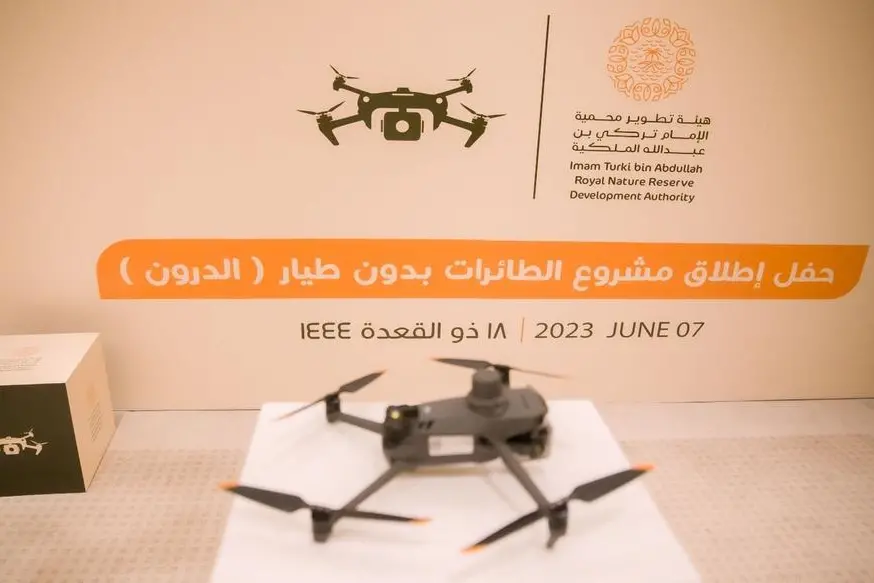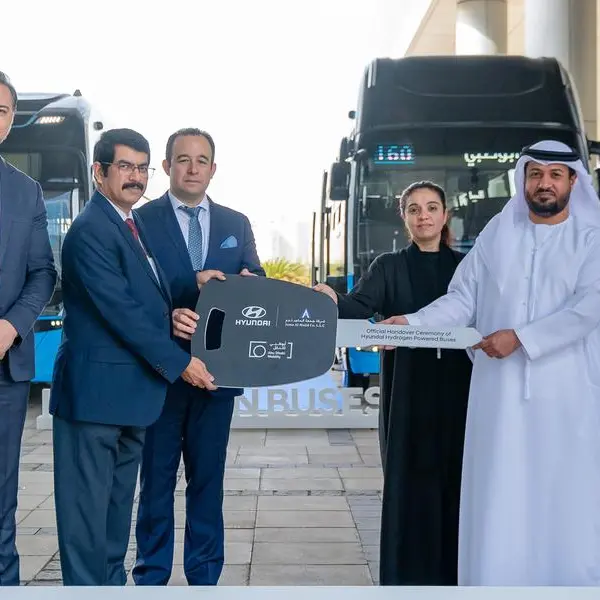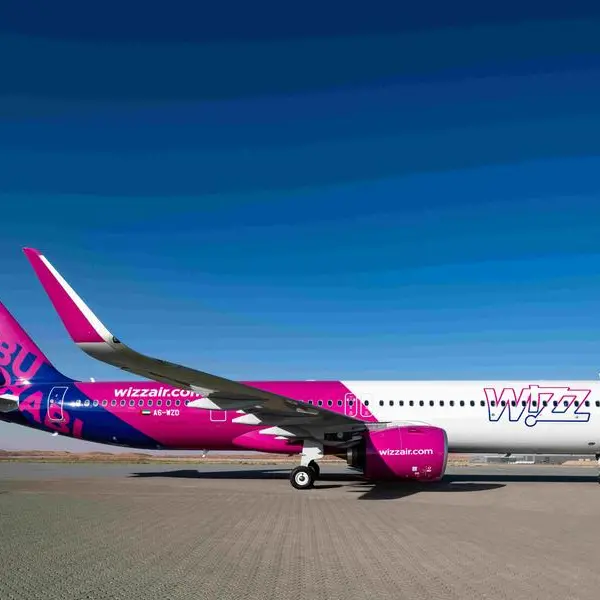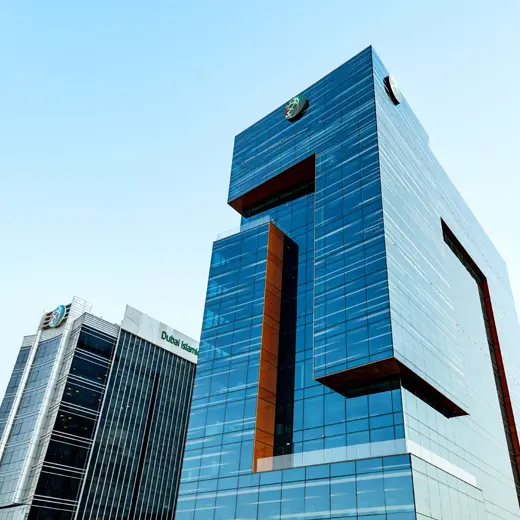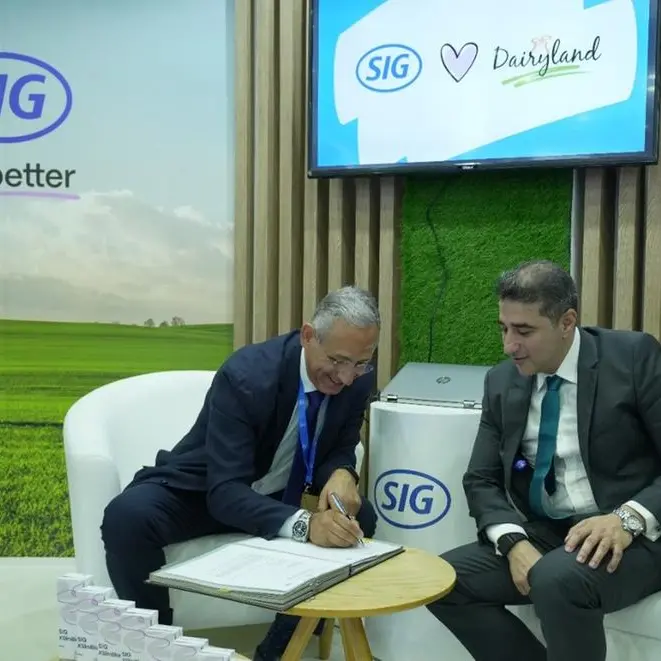PHOTO
Riyadh, Kingdom of Saudi Arabia: In a new initiative by The Imam Turki Bin Abdullah Royal Reserve (ITBA), the reserve's Development Authority has launched a new project to use more than 40 drones for monitoring and protection purposes in line with the goals of Saudi Vision 2030.
The pioneering project, considered the largest of its kind, supports ecotourism, builds professional capabilities, and contributes to the development of local communities.
The CEO of The Development Authority of The Imam Turki Bin Abdullah Royal Reserve, Eng. Mohammed Al-Shaalan announced the launch of the drone project at a ceremony held by the authority in Riyadh and witnessed a significant media presence.
The has reportedly required more than 8,000 hours of vocational training for more than 100 of the reserve's employees. The extensive training included theoretical and practical, as well as field application, in order to ensure the project's success in achieving its goals, according to Al-Shaalan, explaining the role of drones in oversight and monitoring all over the reserve, which will actively increase staff efficiency and reassure ITBA's access and capability to ensure the protection of wildlife and reducing violations.
It is also part of the reserve's digital system at large, as it incorporates artificial intelligence, IoT, and other applications, in line with the goals of Saudi Vision 2030, aiming to protect the environment and wildlife.
Drones and a 100-Year Journey:
The development of drones is one of the most prominent technological phenomena during the twenty-first century, as it contributed to the versatility of their uses after they had started exclusively for military purposes, as their first appearance dates back to WWI. However, the past years witnessed the drone's transformation into multiple uses, making it more familiar. Its use in cinematography is one of its most prominent fields, especially with the emergence of high-resolution digital cameras used in films, dramas, and artworks, as well as matches, sporting events, events, and festivals.
Another area where the use of drones is exponentially growing is in the shipping and delivery of packages, especially with the boom of e-commerce and online shopping.
Drones for Sustainability:
The Development Authority of The Imam Turki Bin Abdullah Royal Reserve is working towards its strategic goals, which revolve around three main elements: protecting the environment and sustainability, developing local communities, and supporting ecotourism in the region, and drones can do a lot for environmental protection. Thus, drones will play a significant role in achieving the reserve's targets, with more than 40 drones covering a spacious area of about 91,500 square kilometers.
The Development Authority of The Imam Turki Bin Abdullah Royal Reserve continues to work in line with the main goals of the Saudi Vision 2030 to expand the plant cover and exert even more efforts in afforestation and environmental protection.
Last year, another drone initiative was launched to plant seeds across a large area of about 2 million square meters within The Imam Turki Bin Abdullah Royal Reserve.
Drones can also enhance efficiency with the ability to cover a 10,000 KM² in about 100 working hours, compared with 320 hours that individuals need to cover the same area indicating an increase in efficiency by more than 220%.
ITBA's Development Authority also wants to enhance and monitor all over the reserve, proactively ensuring its role in environmental protection. As drones allow work in the harshest environments since drones don't struggle with bumpy roads as conventional vehicles could, this can have outstanding benefits to protecting wildlife and reducing violations. By actively increasing staff efficiency, more efforts could be directed toward supporting ecotourism and contributing to the development of local communities.
Environmental Applications
Drones have been used in agriculture, allowing for monitoring crops across the season, spraying pesticides and fertilizers alike, and providing unprecedented abilities to monitor plants individually. Now, more comprehensive agri-tech solutions incorporate drones using artificial intelligence and data science.
With the ease of remotely controlling these flying drones, it is much easier to go where other tools can't, which protects human life and allows scientists and researchers to make new observations and scientific discoveries.
Drones and Wildlife:
Drones have not only pushed research in marine biology and first observing a previously unknown species of penguins, but they have even helped study wild animals and other forms of wildlife and the protection of their natural habitats, with few disruptions and a wider field of monitoring and recording.
This increases the efficiency of work in wildlife habitats by saving time, effort, energy, and costs.
With the ability to fly high rapidly, drones provide an advantage in accurate monitoring with no challenges imposed by the different types of terrains through aerial shooting from a broad bird-eye view. This has definitely to the protection of endangered species and combating illegal hunting and other violations, and adequately combat deforestation and forest fires.
Drone Industry Growing With Challenges
The global drone market was estimated at $30 billion last year, with expectations that it can grow by 39% every year up to 2030, while other estimates see it growing to more than $63 billion as early as 2025.
Despite the massive potential of the drone industry, there remains an ongoing debate about regulations and how to make sure that drones do not violate the rights to privacy and private property, with other challenges in the cybersecurity domain with its high connectivity.
-Ends-
